ALLESTREE SHORT WALK
Allestree Short Walk
Allestree Park and Conservation Area are explored in this short walk. After walking around the park and its attractive tree-lined lake a visit to Allestree’s Conservation area follows. Here there is much of interest from a lovely thatched cottage to a yew tree that is claimed to be 1,000 years old. Children particularly will be intrigued by the old water pump which was used to supply the villagers with water. Plan your visit to ensure can enjoy refreshments if required.
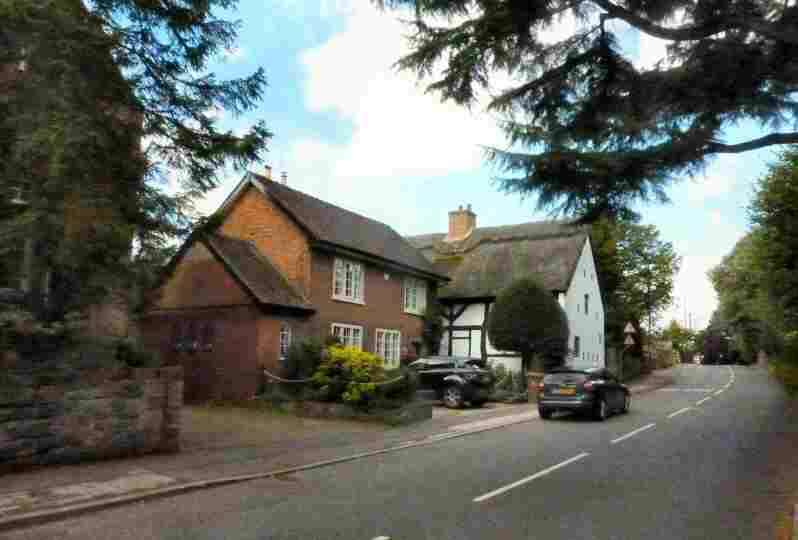
LOOK OUT FOR
Route Point 1 – Bache Thornhill of Stanton-in-Peak bought and enclosed the park and commenced building Allestree Hall in the early 1800s but died before it was complete. It was eventually finished and occupied by John Giradot, a man who had acquired great wealth from his time with the East India Company. He was known locally as ‘the Nabob’, and when he went out in his magnificent coach and four, he was accompanied by a black footman, coachman and two ‘spotted dogs’. In the 1820s, the estate was purchased by Sir William Evans, whose father owned the mills at Darley Abbey. The lake was constructed in 1825 and sixty-seven years later the estate passed to the Gisborne family Later it was leased to the Raphaels, before in 1916 coming into the possession of Colonel Johnson and his wife. They were the last of the line of lords of the manor and squires of Allestree.
Route Point 2 – Allestree Park Lake was constructed in 1825 and is partly surrounded by tall trees. It provides a beautiful habitat for wildlife. The park is the wildest and most scenic of Derby’s parks. A firm called Commercial Construction Ltd bought the park in 1928 and built houses on what are now Evans Avenue, Main Avenue and Short Avenue. The firm then sold out to Derwent Builders, who intended to expand the estate, but the war intervened. First, the army and then the fire brigade used Allestree Hall during wartime, the latter leaving in 1950. The Council then stepped in and bought the 323 acres of parkland including the hall. A nine-hole golf course was constructed in 1948 and extended to eighteen holes seven years later. However, in 1920 the course closed and there are now plans to rewild it. Making it the first large-scale urban rewilding project in the UK. The hall was expected to be turned into a wedding venue but that is no longer proceeding at the time of writing.
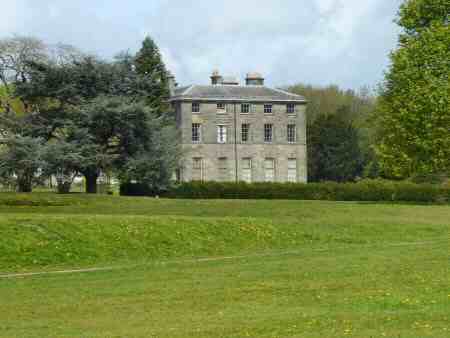
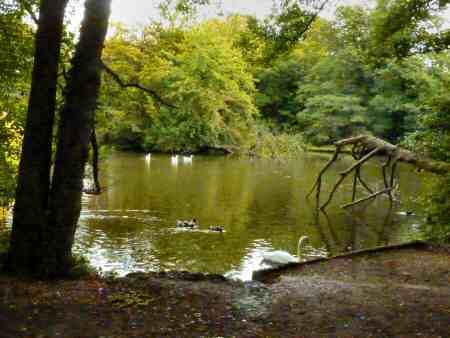
Point 3 – Park Lane leads to the oldest part of Allestree which was designated a Conservation Area, in September 1991. It was extended five years later. The cottages behind the pump date from the late 18th century, where the centre of the village once stood. Further, along Cornhill, thatched Yew Tree Cottage is thought to be from the 17th century. An interesting group of Victorian cottages, built in 1893, is found at The Poplars off Park Lane. Allestree is a pleasant residential suburb on the northern periphery of Derby. Allestree has a shopping centre at Park Farm and is also home to Derby University. It is almost surrounded by agricultural land and attractive parks. Markeaton Park is to the south, Allestree Park on the north and Darley Abbey Park on the eastern side; only a short distance away to the southwest, set in beautiful parkland is Kedleston Hall.
Point 5 – It was not until 1868 that St Edmund’s Church became a parish church; previously it had been a chapel of the mother church of Mackworth. The rights of baptism, marriage and burial rested solely with the mother church. Despite only holding the status of a chapel. It had a fine 12th-century doorway. The precise age of the church is uncertain, but its dedication to an Anglo-Saxon saint suggests a pre-norman existence. When the church was rebuilt in the mid-1860s, by Stevens and Robinson of derby, a south aisle was added and the doorway was rebuilt. There are several memorials from the 17th and 18th centuries to the Mundy’s of Markeaton and the Evans and Johnsons of Allestree Hall. The church is GradeII* listed.
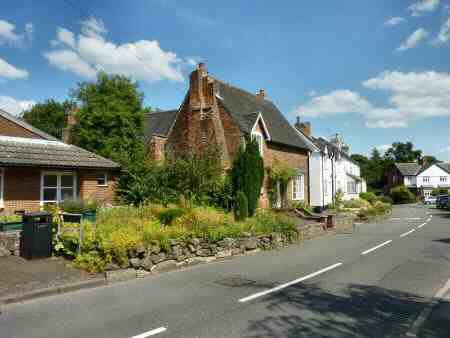
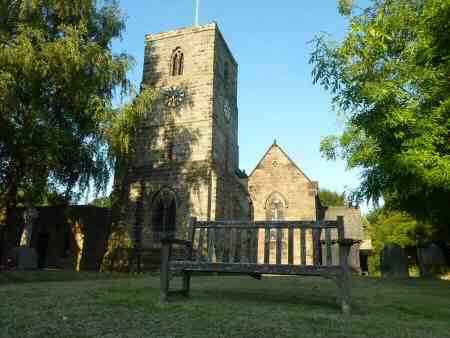
Point 6 – Red Cow Public House at Allestree was probably in existence in the early 17th century. It is shown on the 1737 map. The present building is somewhat later, the older part being late 17th century. Traditionally the pub played a major role in village life and was particularly busy when the village wakes were held. The week began with the patronal festival; this was held on the first Sunday before the 20 November, when the death of St Edmund, the patron saint of the church, was commemorated.
Point 7 –It is claimed the yew tree in St Edmund’s churchyard is 1,000 years old. The yew is one of the longest-lived native species in Europe. This has made it a symbol of death and doom and many are found in churchyards. The trees’ longevity and association with churchyards are proven by the fact that at least 500 churchyards in England contain yew trees older than the churches themselves. For many centuries it was the custom for yew branches to be carried on Palm Sunday and at funerals.
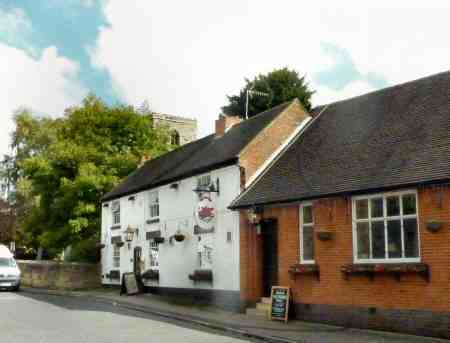
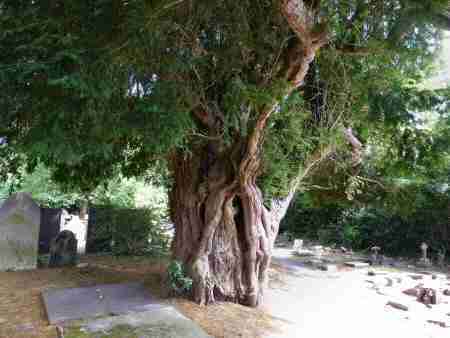
THE ROUTE
- There is a car park off the A6 near Allestree Hall.
2. Explore the park and walk around the lake leaving the park at the entrance to Main Avenue.
3. At the top of Main Avenue go to the right up Park Lane to visit Allestree Conservation Area.
4. It is a good idea to extend your walk from the junction with St Edmund’s Close and keep straight ahead up Cornhill. This will enable you to view several interesting buildings. Including, thatched Yew Tree Cottage which is thought to date back to the 17th century.
5. Retrace your steps to the village pump, which once supplied water to the ancient village. Here you turn right and walk down St Edmund’s Close to St Edmund’s Church.
6. The Red Cow public house is a few yards further down the road on the left.
7. Go through the churchyard past the yew tree that is claimed to be 1,000 years old. To the rear by the lamppost is reputed to be the haunt of Allestree’s ghost.
8. At the rear of the church at an intersection of paths keep to the right down Church Walk to reach the A6 road and turn left.
9. After only a few yards near the junction of Park Lane is The Little Shed eatery and takeaway. Cross Park Lane and continue down Main Avenue. On your right is a small estate built by Commercial Construction Ltd when the park started to be redeveloped around 1928.
10. On reaching the foot of Main Avenue you re-enter Allestree Park and return to the starting point of the walk.
REFRESHMENTS
The Red Cow Public House on St Edmund’s Close, next to the church. For more information visit: www.redcowallestree.co.uk
The Little Shed located at 3 Park Lane provides breakfasts, lunch, teas and takeaways. For more information visit:www.thelittleshedderbyshire.co.uk
